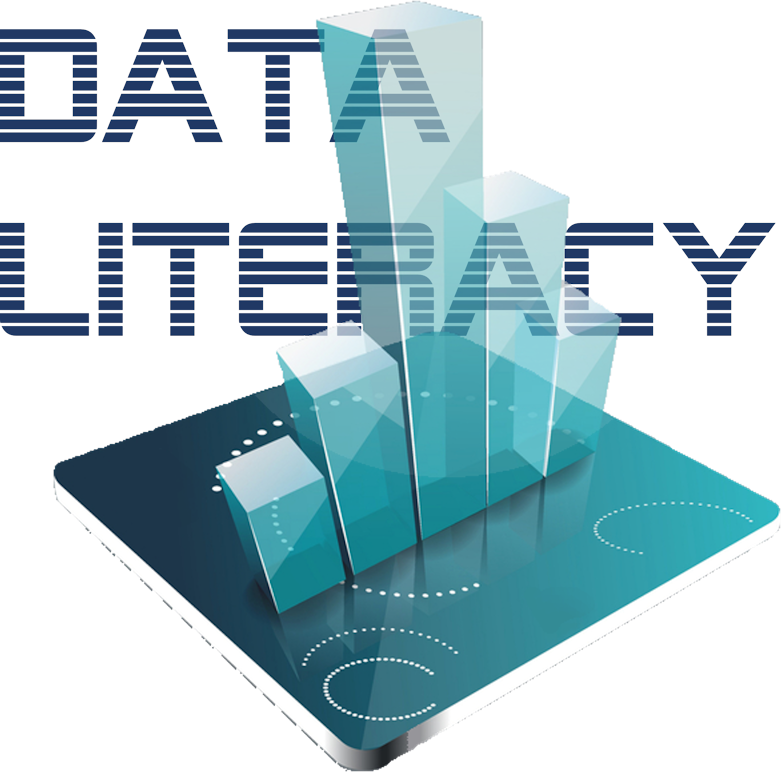There are few places on Earth that aren’t touched by the Digital Age and the data that drives it. That’s why Bill Schmarzo, known as the Dean of Big Data, asserts everyone needs to be data literate. He explains, “In a world where your personal data (and the preferences and biases buried in that data) are used to influence your behaviors, beliefs, and decisions, data literacy is a fundamental and indispensable skill.”[1] The need for data literacy is no less important in today’s data-driven business environment. In fact, Gartner insists, “Data literacy is an essential part of a data-driven culture.”[2] “According to MIT,” the Qlik team reports, “data literacy is the ability to read, work with, analyze and argue with data. It’s a skill which empowers all levels of workers to ask the right questions of data and machines, build knowledge, make decisions and communicate meaning with others.”[3]
The Importance of Data Literacy
According to marketing specialist Tim Stobierski (@TendreCroppes), “Data has been one of the greatest drivers of innovation in both business and society in recent decades. Using data, organizations can make more data-driven decisions and inform business strategies with numbers instead of intuition. This often leads to increased performance, especially when compared to less data-driven firms.”[4] Like other experts, however, Stobierski insists data literacy is essential for digital enterprise success. He explains, “Access to data isn’t all it takes to set a business on the path to success. It also takes employees who understand and know how to leverage data. This has caused increased demand in the job market for business professionals with data literacy.” And data literacy should begin at the top.
According to the Qlik team, research shows business leaders are struggling to master data literacy resulting in “a widespread deficiency in data confidence.” This lack of leadership confidence, they say, prevents organizations from thriving “in today’s analytics economy” as well as hampers “their ability to drive a data cultural change across the organization. And, in a new era where data is the new basis for competition and relied upon by global enterprises to derive insights and win the marketplace, this escalating skills gap is shackling success.” On the other hand, they report, “Large enterprises with strong corporate data literacy have shown up to 5% higher enterprise value.”
Freelance writer Michelle Knight (@Michell24332586) makes a good point. She notes that data literacy requires data access. She explains, “Easy access to data sets are essential to exercising these skills. All employees in an organization involved with data-driven decisions should learn to think critically about the data they use for analytics and how they assess and interpret the results of their work.”[5] Josh Bersin (@Josh_Bersin), founder of the Josh Bersin Academy, and Marc Zao-Sanders (@fairaccess), CEO and co-founder of filtered.com, assert companies must shoulder the responsibility for making their employees more data literate. They explain, “Today, the responsibility has shifted from academic institutions to employers, where skills development programs are flourishing. … This is a responsibility more employers should embrace. They have the resources, and they’d certainly reap the rewards.”[6]
Improving Corporate Data Literacy
The need for better data literacy is well-substantiated. Journalist Sara Brown reports, “A Gartner survey of chief data officers found that poor data literacy is one of the top three barriers in building strong data and analytics teams, while a data literacy survey by Accenture of more than 9,000 employees in a variety of roles found that only 21% were confident in their data literacy skills.”[7] The question facing many corporate leaders is how to proceed. The bad news, according to Brown, is that “there’s no single way to establish data literacy.” The good news, she says, is that “experts recommend a few key steps.” Those steps are:
Step 1. Distinguish between data literacy and technical literacy. Brown writes, “Businesses have spent too much time training people on hard-to-use technical tools instead of emphasizing data.” Experts insist understanding the data is much more important.
2. Start with a baseline of employee skills. If you don’t know where you are, you’ll never be able to figure how to get to where you want to go. That’s why Brown explains, “Building data literacy starts with knowing existing skills and agreeing on the level of proficiency for different job types. … From there, companies can develop a plan for how to upskill workers.”
3. Use common language. Language used in specialized fields can be as unintelligible for a lay person as any other foreign language. “Using jargon or imprecise terms,” Brown explains, “can create confusion and complicate communication about data.”
4. Build a culture of learning and reward curiosity. According to Brown, “Leaders should make sure to foster an environment that rewards curiosity instead of punishing lack of data literacy.” Lifelong learners make the best employees and curiosity fosters lifelong learning. Einstein believed curiosity was one of humanity’s best traits. He once wrote, “The important thing is to not stop questioning. Curiosity has its own reason for existence. … It is enough if one tries merely to comprehend a little of this mystery each day.”[8] For many employees, trying to understand data is a mystery.
5. Remember that everyone learns differently. Although an increasing number of academics are concluding the concept of learning styles is bogus, it’s true that there are a lot of different ways to teach any subject.[9] Brown notes, “Not everyone is suited to a three-hour training class — some employees learn best with hands-on exercises, while others might like self-led courses.”
6. Define success. The late business guru Peter Drucker is often attributed with saying, “You can’t improve what you don’t measure.” Brown writes, “Without metrics to gauge success, it’s hard to know if data literacy initiatives are successful.” One of the most difficult tasks you might face is deciding what success looks like when trying increase data literacy. Is it raising employee skill levels or seeing an increase in the company’s bottom line?
7. Make sure leaders are involved. As noted above, there is evidence that business leaders are lacking in data confidence. Increasing data literacy in the C-suite ensures leadership will support other data literacy efforts. Brown insists, “All top executives need to be on board and modeling the desired results.”
8. Know that data literacy alone isn’t enough. Data literacy, like all educational efforts, takes time. How much time depends on the basic skill levels of employees at the beginning of the process. Brown observes, “Even though results can come relatively quickly, data literacy isn’t the only part of becoming a data-driven company. … It’s a piece of a larger picture that also includes data maturity — that is, easy access throughout the organization to good data; data-driven leadership — meaning that leaders demonstrate the skills they require of workers; and finally, the ultimate goal — data-driven decision-making.”
Concluding Thoughts
Bersin and Zao-Sander assert, “The cost of not understanding the context of data is huge.” That’s why they insist, “Data skills are now essential for almost every role in every organization.” They conclude, “Data literacy has become important, for almost everyone. Companies need more people with the ability to interpret data, to draw insights, and to ask the right questions in the first place. These are skills that anyone can develop, and there are now many ways for individuals to upskill themselves and for companies to support them, lift capabilities, and drive change. Indeed, the data itself is clear on this: Data-driven decision-making markedly improves business performance.”
Footnotes
[1] Bill Schmarzo, “Data literacy: What it is and why it matters,” VentureBeat, 12 March 2022.
[2] Mike Rollings, Alan D. Duncan, and Valerie Logan, “10 Ways CDOs Can Succeed in Forging a Data- Driven Organization,” Gartner, 22 May 2019.
[3] Staff, “How to Drive Data Literacy With the Enterprise,” Qlik.
[4] Tim Stobierski, “Data Literacy: An Introduction for Business,” Harvard Business School Online, 23 February 2021.
[5] Michelle Knight, “What Is Data Literacy?” Dataversity, 14 October 2020.
[6] Josh Bersin and Marc Zao-Sander, “Boost Your Team’s Data Literacy,” Harvard Business Review, 12 February 2020.
[7] Sara Brown, “How to build data literacy in your company,” MIT Management Sloan School, 9 February 2021.
[8] Albert Einstein, “Old Man’s Advice to Youth: ‘Never Lose a Holy Curiosity.’,” Life, 2 May 1955.
[9] Stephen DeAngelis, “Learning Styles: Smoke but no Fire,” Enterra Insights, 25 March 2016.





